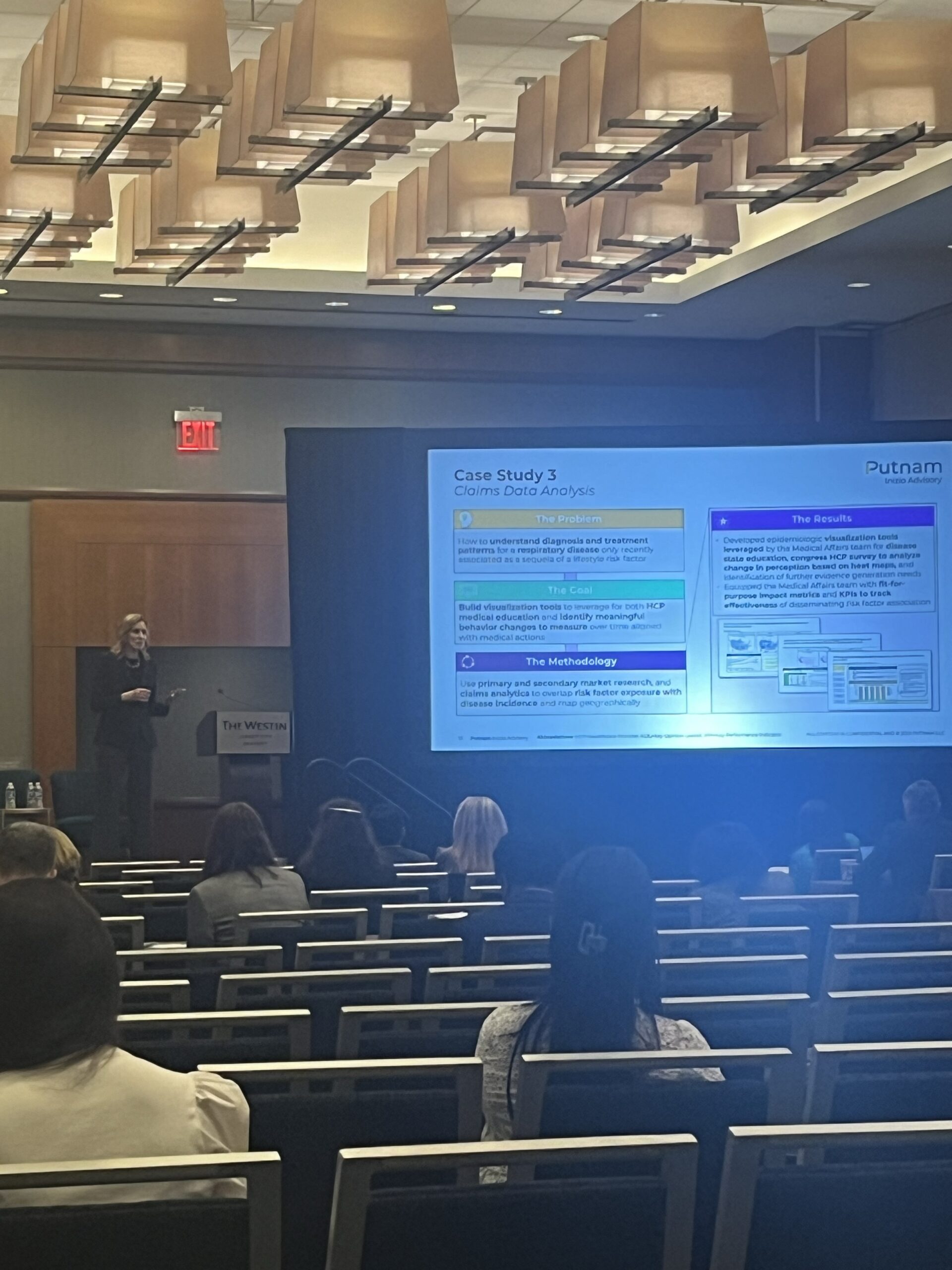Highlights from the Fierce Medical Affairs Strategic Summit (MASS) East 2024 (Jersey City, NJ)
The Fierce Medical Affairs Strategic Summit (MASS) East conference convened May 6-8, 2024 in Jersey City, NJ, attracting Medical leaders across biopharma and medical devices. Over three days, the conference reaffirmed the top-of-mind importance of several themes for Medical Affairs leaders today:
- The ever-increasing importance of Medical Affairs as an integrating function across R&D and Commercial, across asset lifecycle;
- The need to identify and engage a diverse set of HCPs, patients, and population health decision makers (‘PHDMs’) across a variety of platforms and channels (e.g., through both popular/ leisure-based and professional social media);
- Identification of – and adjustment of strategy against – meaningful metrics that measure the impact of Medical Affairs activities;
- The onus on Medical Affairs to leverage AI (whether through machine learning (‘ML’), natural language processing (‘NLP’), and/ or generative AI (‘GenAI’)) to parse massive amounts of scientific and clinical data, improve clinical research success and patient finding, and accelerate generation of meaningful Medical content
Medical Affairs: a crucial ‘bridge’ across biopharma functions, throughout asset lifecycle
As therapies become more complex, requiring patient finding, precision diagnostics, and extensive HCP and caregiver education to identify and treat eligible patients at launch (and throughout asset lifecycle), the role of Medical Affairs has never been more important. With Clinical Development teams focused on successful trial execution and registration within the fixed endpoints of the development program, and Commercial teams bound to discuss only currently labeled indications, Medical Affairs is uniquely positioned to work with HCPs, patients, and PHDMs in identifying additional indications and populations for any given intervention. Even within labeled indications, the complexity of modern precision medicines creates a need for more extensive Medical Education around mechanisms of action (‘MoAs’), publications, guidelines, diagnostics, and indications. Integration of Medical Affairs in the field presence of any biopharma organization – coordinated (and non-duplicative) with other field-facing functions like Commercial, Clinical Development/ Operations, and Market Access – is therefore a crucial enabler for asset success and patient impact.
Tailored, omnichannel Medical Communications and Education
Since 2020, 70% of actively practicing HCPs are ‘digital-native’. Medical Affairs organizations have taken note and are engaging key stakeholders (HCPs, patients, advocacy groups, and PHDMs) through tailored content across the digital channels they use (i.e., both popular/ leisure-based and professional medical-specific social media). Several sessions at the summit addressed successful measures taken by Medical Affairs leaders in devising, deploying, and adjusting omnichannel content, including:
- Comprehensive development of stakeholder ‘personas’, incorporating differential consumption patterns across professional- and leisure-based social media platforms;
- Identifying and focusing on 2-3 salient messages from the scientific narrative (per campaign) to communicate across personas and channels;
- Defining tangible metrics of successful messaging and behavior change by persona (e.g., diagnostic testing uptake or ‘medical share of voice (mSOV)’ across channels);
- Proactively increasing awareness of sponsored digital channels, e.g., including QR codes for Medical websites on Medical Education material and ensuring Medical fieldforce are aware of the full repertoire of company digital footprint and the leave-behind materials to link to it
Measuring Medical Affairs impact
Measuring and titrating Medical Affairs strategy against tangible metrics was a focus of multiple compelling sessions at the summit. The optimal mix of metrics should measure not just ‘activity’ (e.g., HCP interactions), but also ‘impact’ (i.e., how Medical Affairs activities impact the behavior, knowledge, and beliefs of healthcare stakeholders to drive better patient outcomes). Metrics should be reflective and suggestive of specific elements of (and required adjustments to) Medical Affairs strategy and tactics, e.g., change in behavior across diagnostic or therapeutic pathways, or awareness of a specific MoA element. Ultimately, presenters converged on a common theme that should guide the mission and choice of metrics: improvement of patient and public health, and the reduction of disease burden (Figure 1).

Artificial intelligence as a crucial enabler – and call to action – for Medical Affairs
Over 5,000 new publications enter the medical literature daily. Traditional cycle times for digesting and acting on newly published scientific data (e.g., creating Medical Education content for field Medical teams to address Medical Information requests) can be upwards of 2-4 weeks. The case for leveraging AI to accelerate Medical Affairs efforts has never been stronger. Summit presenters described a host of novel use cases of artificial intelligence, including:
- Leveraging NLP and GenAI for patient- and non-specialist HCP-facing plain language summaries of key publications (including partnering with smaller journals that have yet to adopt their own summarization infrastructure at the time of manuscript submission);
- Chatbots to streamline and accelerate Medical Information requests;
- Using ML to identify both ‘next best action’ for Medical Education and messaging by stakeholder persona and channel, and identifying globally- and regionally-influential HCPs to effectively broadcast Medical Education among peers;
- ML validation of key patient demographic, socioeconomic, clinical, and treatment-based determinants of positive or negative clinical outcomes, with a wide range of applications from trial population enrichment through identification of health equity gaps
While there still exists a spectrum of experience in adopting these new technologies across various biopharma organizations, interest in (and resourcing for) AI remains top-of-mind across Medical Affairs leaders.
Learn how we’re helping clients transform with impact.

Jump to a slide with the slide dots.
 Clement Francois
Clement Francois
Refining the Parallels Between EMA Expansion and JCA Implementation: Quantitative Insights and Recommendations
Parallels between EMA & JCA reveal risks of imbalance in EU HTA. Learn how to ensure fair, inclusive JCA implementation.
Read moreAdvancing Health Equity in Life Sciences: Panel Recap
Industry leaders discuss breaking barriers in health equity, inclusive research, and patient access at Inizio’s NYC panel.
Read more Mike Harvey
Mike Harvey
How AI Is unlocking new insights from claims and EHR data in Medical Affairs
AI is transforming Medical Affairs, unlocking real-time insights from claims & EHR data to improve evidence generation, market shaping & patient care.
Read more


